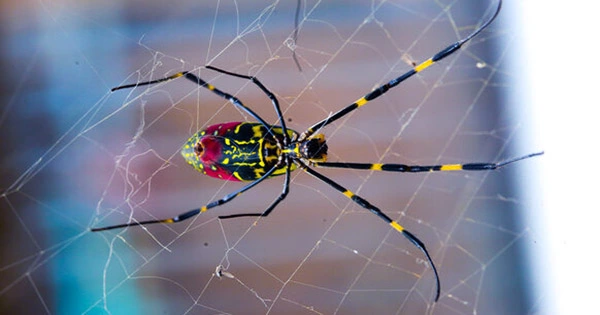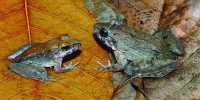The itinerant jor spider (Trichonephila clavata) arrived in the United States in 2014, most likely by shipping container, and has been ballooning its way across its newfound habitat ever since (yes, spiders can fly). The jor spider is now thought to have taken up residence in at least 25 counties from Georgia to South Carolina, implying that it may have made a permanent home throughout most of the East Coast. The invasion isn’t unprecedented; for the previous 160 years, the similarly related golden silk spider (Trichonephila clavipes) has successfully colonized the same area. A new study published in Physiological Entomology looked at whether the success of this spider may be used to predict the jor spider’s future status in the United States.
They compared the biology and physiology of the jor spider to that of the golden silk spider to see if it might be confined in the southeastern United States in the same way. It’s thought that the latter never expanded beyond this region due to its preference for tropical climates, which limit its range in terms of temperature. Researchers compared the heart rate, survival, and metabolism of jor spiders to golden silk spiders by collecting specimens and looking at reports on iNaturalist.org. They also looked at the duration of their lifecycles, which might suggest how probable it is for a species to perish in a cold spell.
Their findings revealed that jor spiders had a greater metabolism than golden silk spiders – twice as high – and a heart rate that is 77 percent higher in low temperatures, both of which would help them survive in colder conditions. Freeze tests confirmed this, with a 74 percent survival rate in a brief cold snap compared to only 50 percent for golden silks.
Jor spiders also have a shorter life cycle than other spiders, which means they just require a little window of ideal weather to keep the party going. The study authors conclude that “these data imply the jor spider may live in a cooler climatic location than the southeastern United States,” which “might be important information for management or planning purposes.”
When it comes to what to do if you find the jor in your backyard, corresponding author Andy Davis of the University of Georgia’s Odum School of Ecology thinks resistance is pointless. In a statement, he stated, “People should strive to learn to live with them.” “I can imagine cutting a web down and relocating them to the side if they’re truly in your way, but they’ll be back next year.” The Jor takes its name from the fabled spider Jorgumo, who, according to Japanese tradition, rules men by transforming as a lady and seducing them into their web. It’s somewhat fitting, therefore, that its namesake is capturing large swaths of the United States so quickly.
















